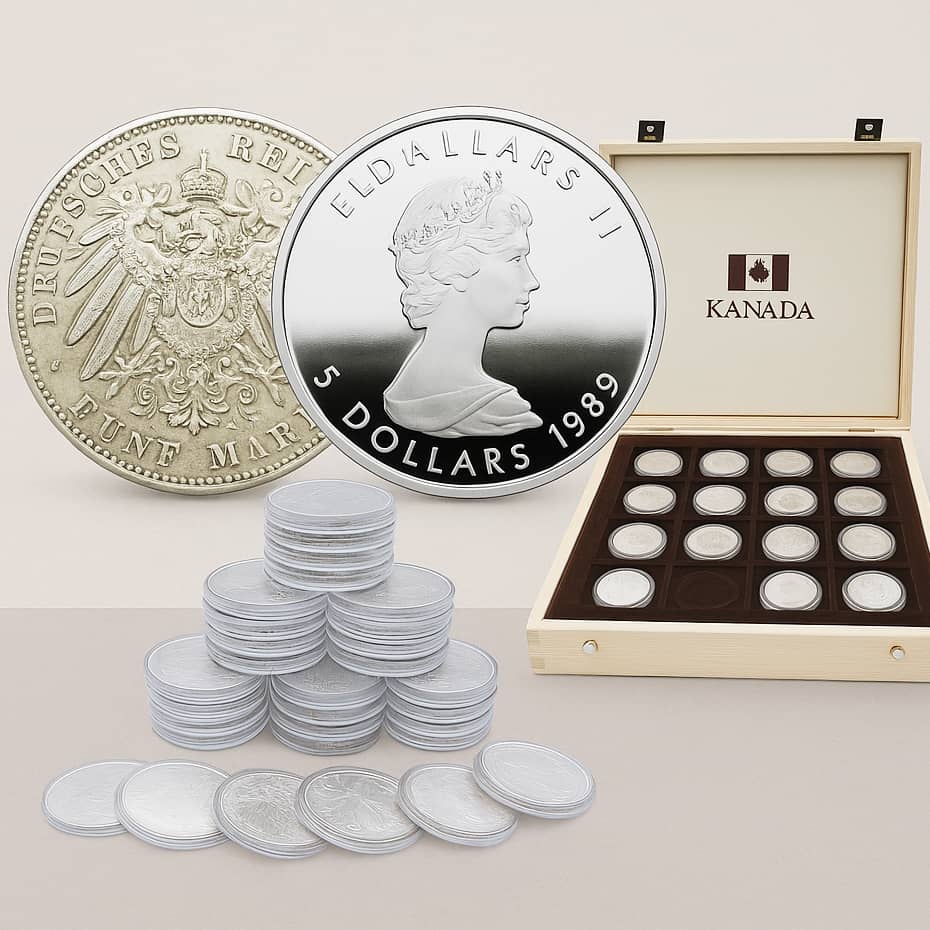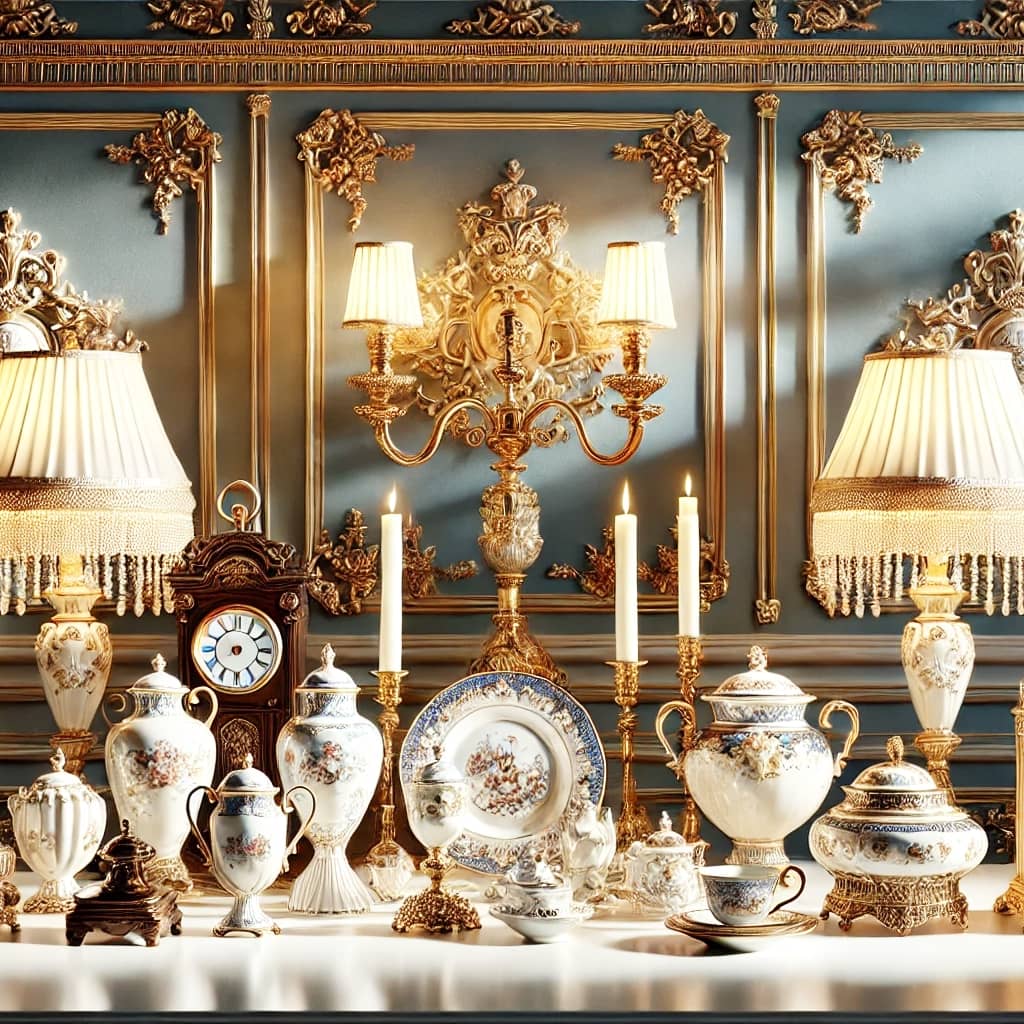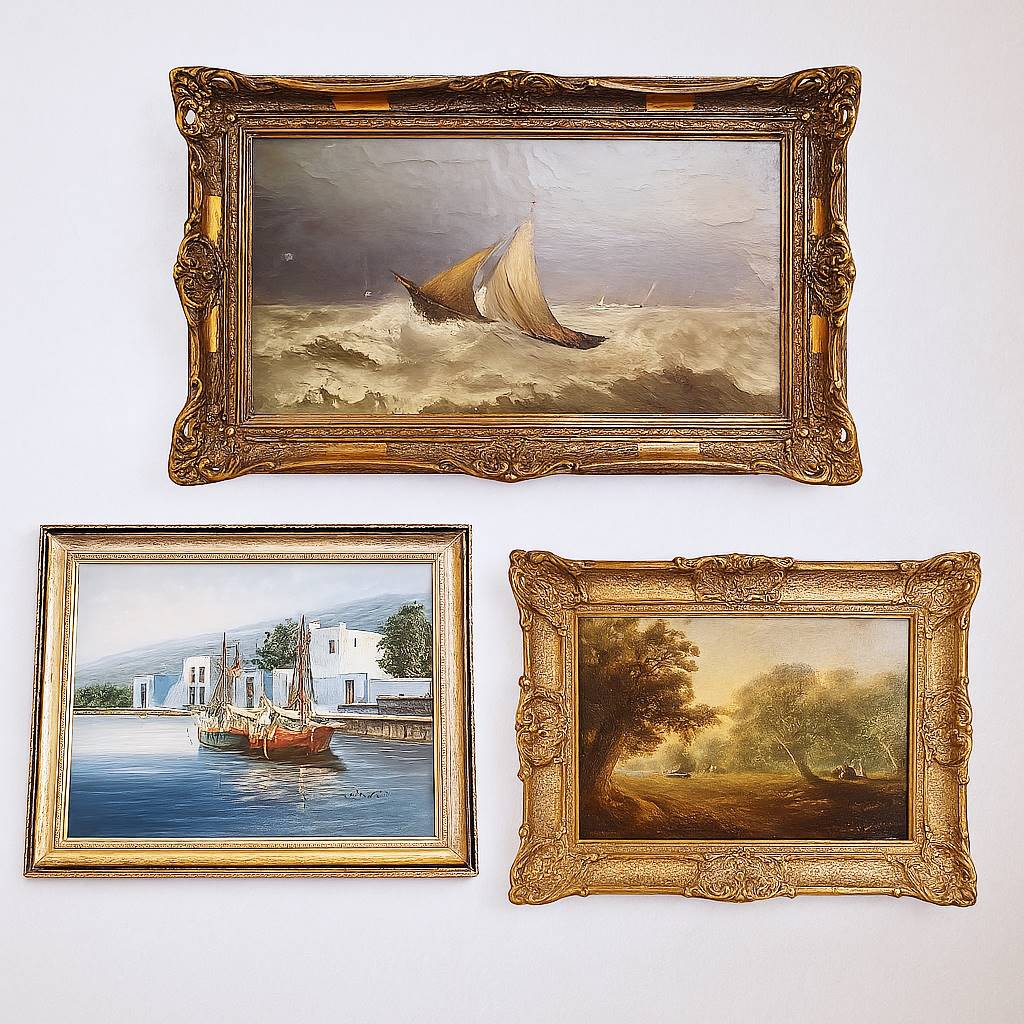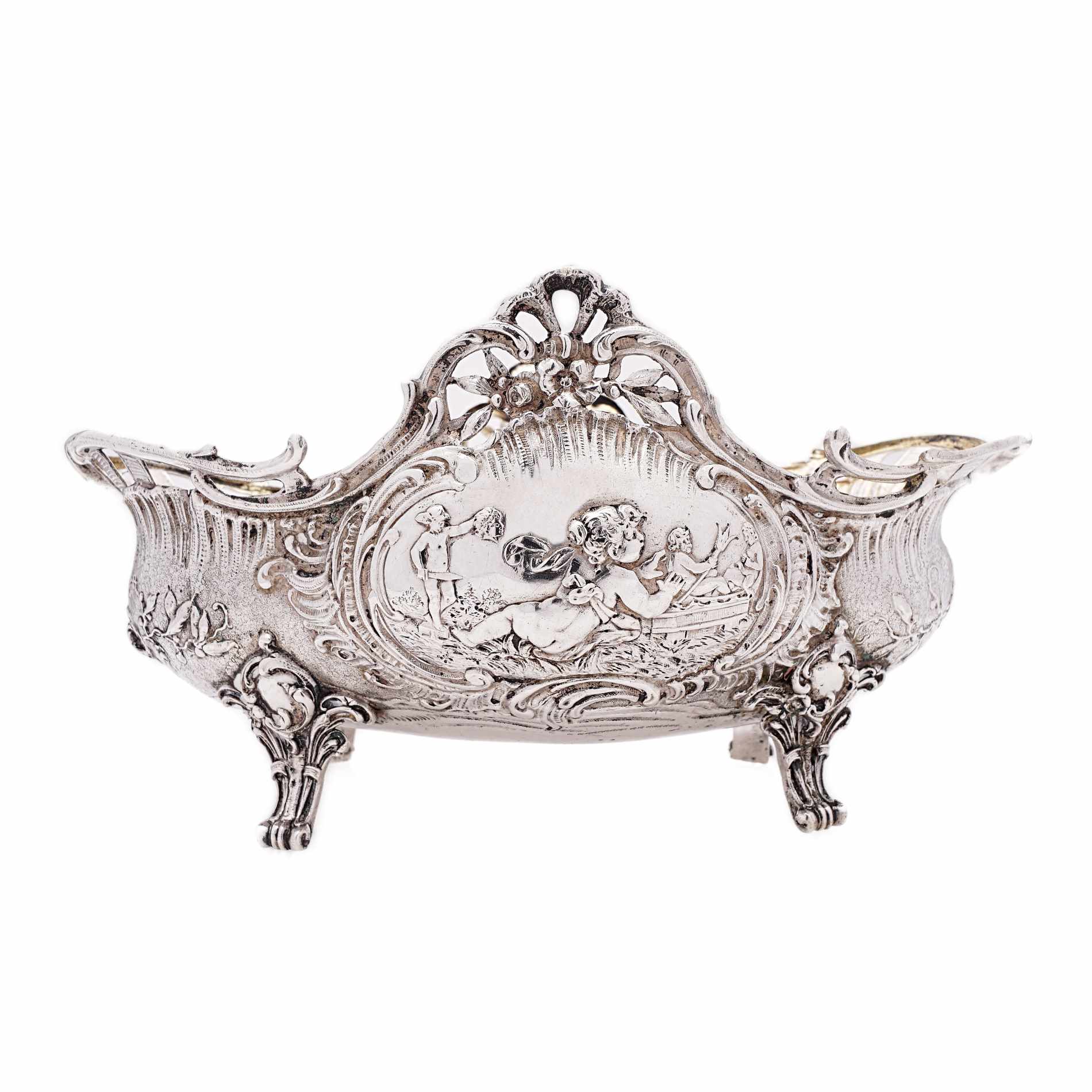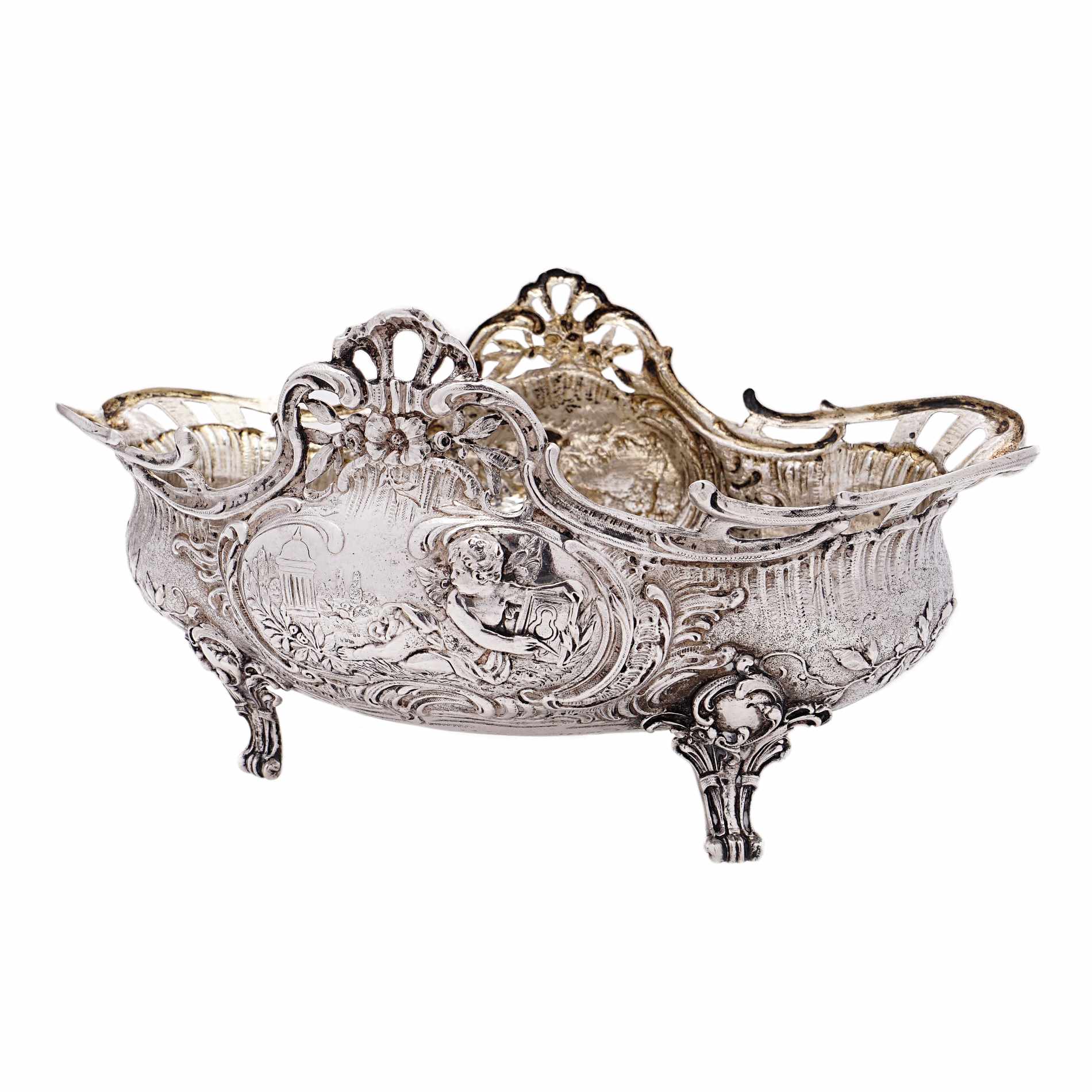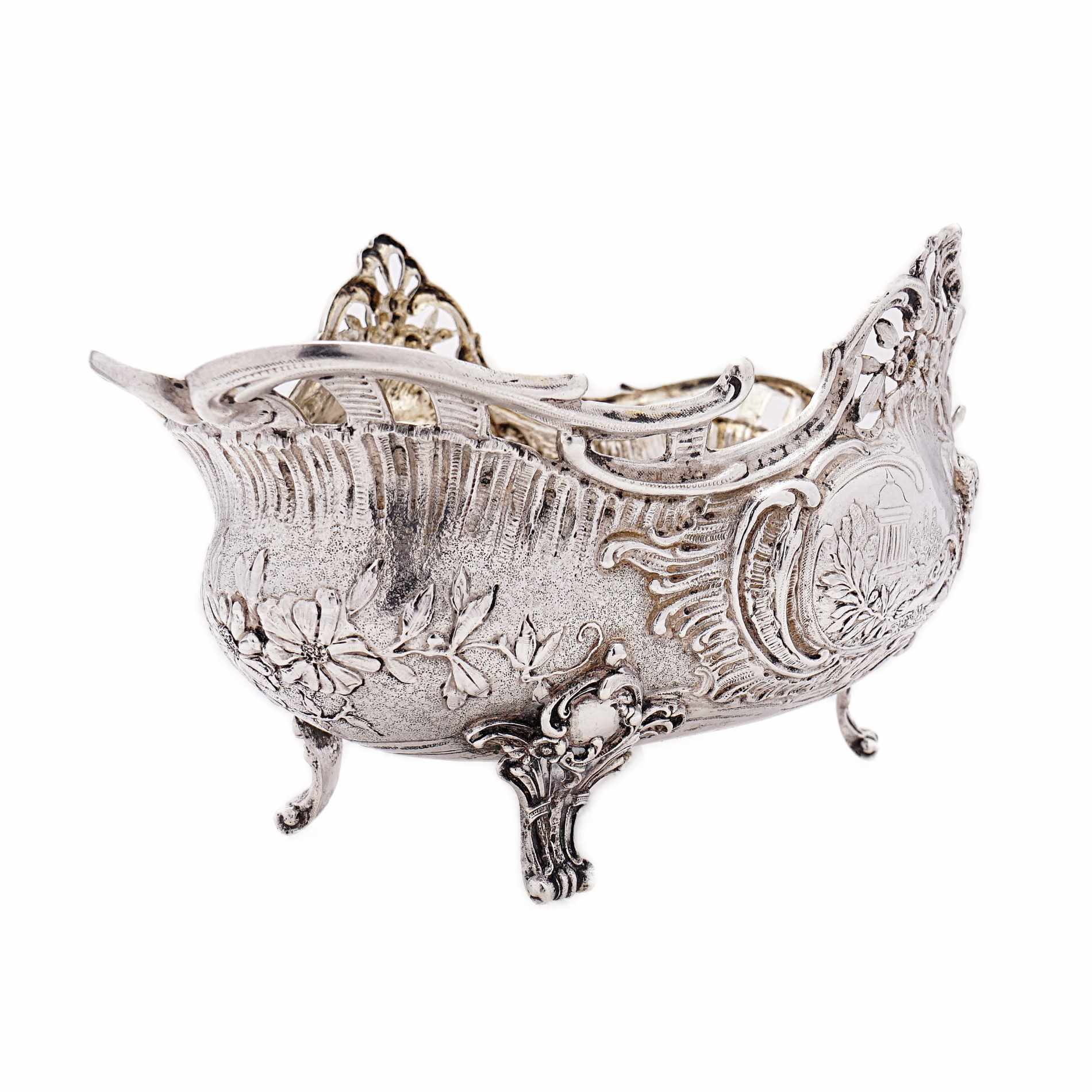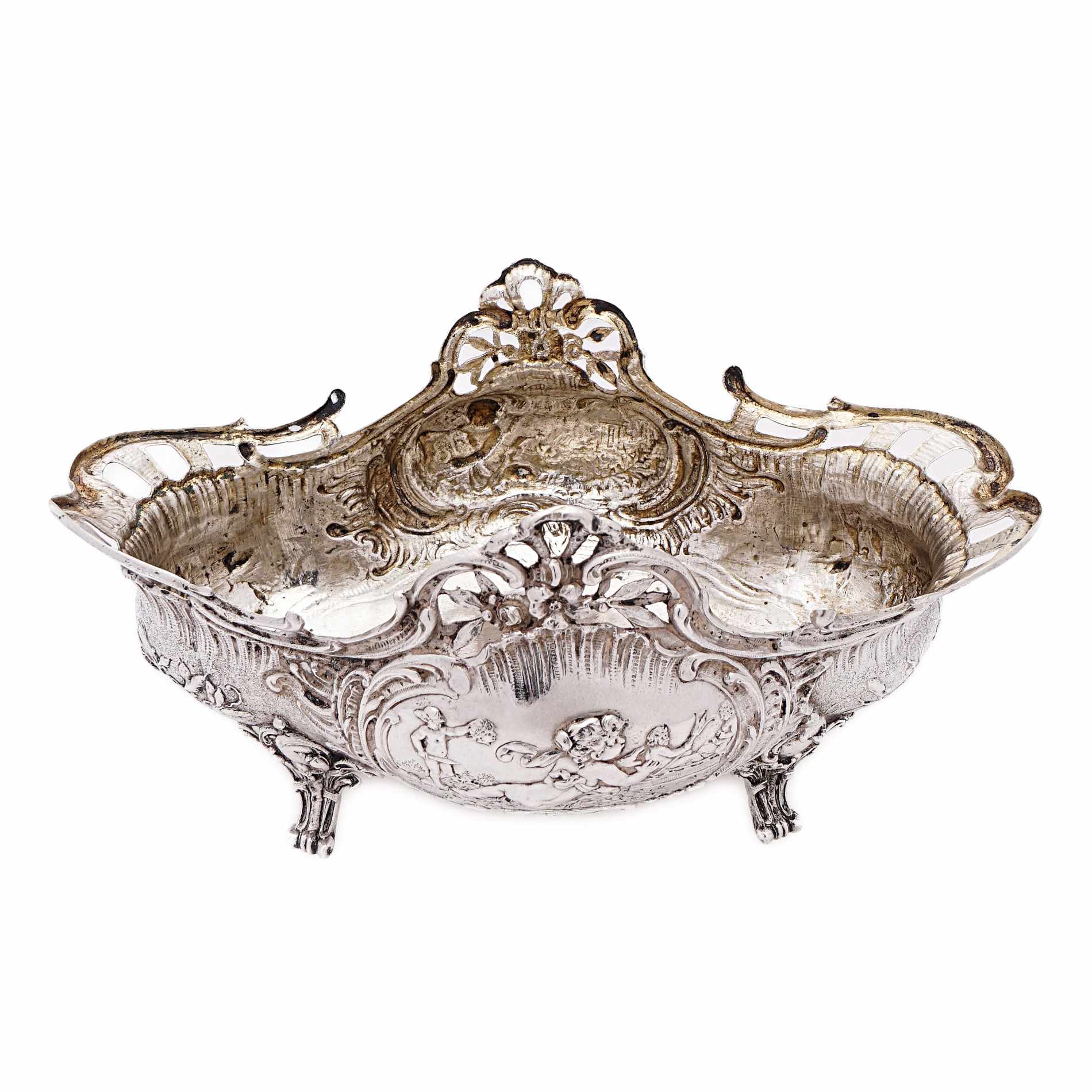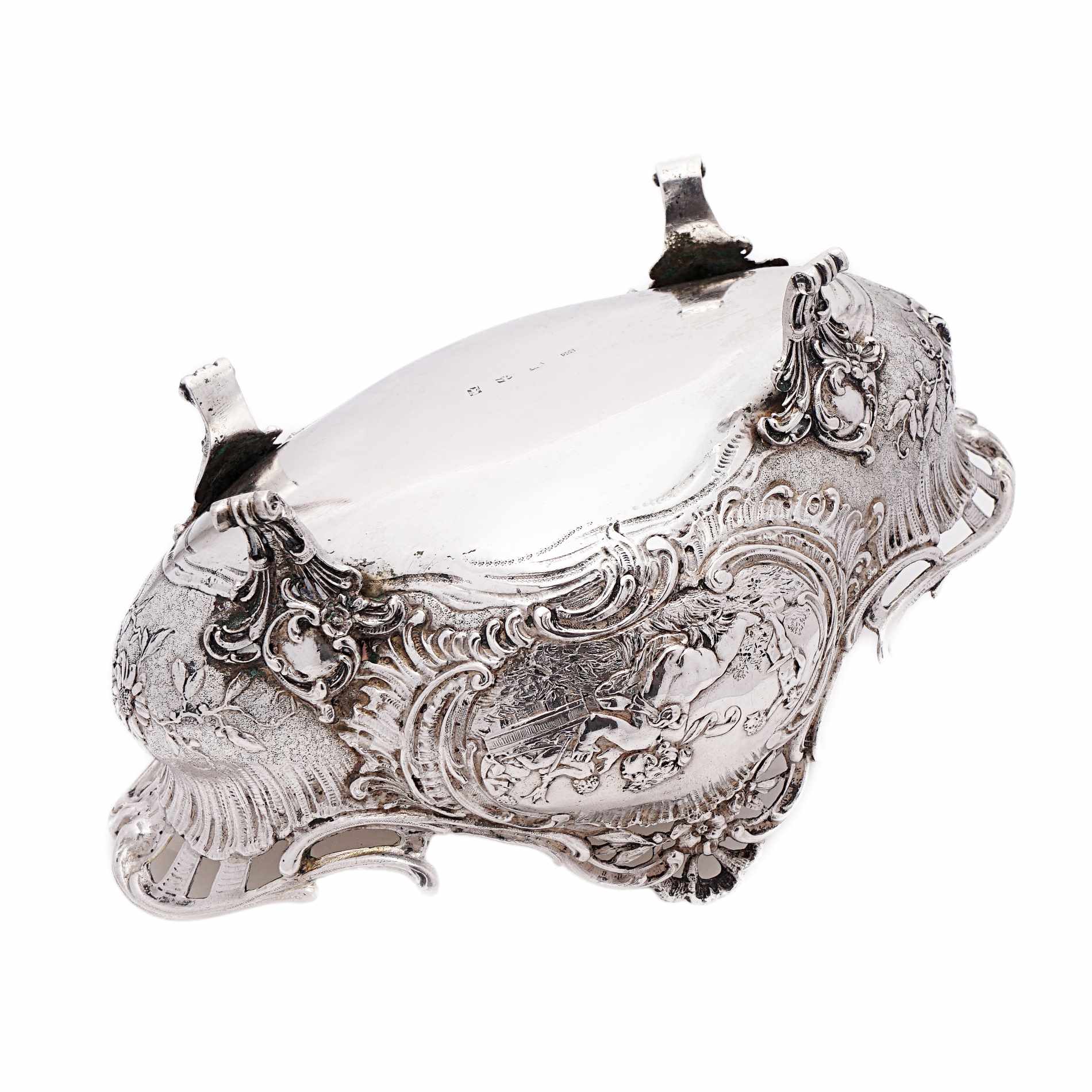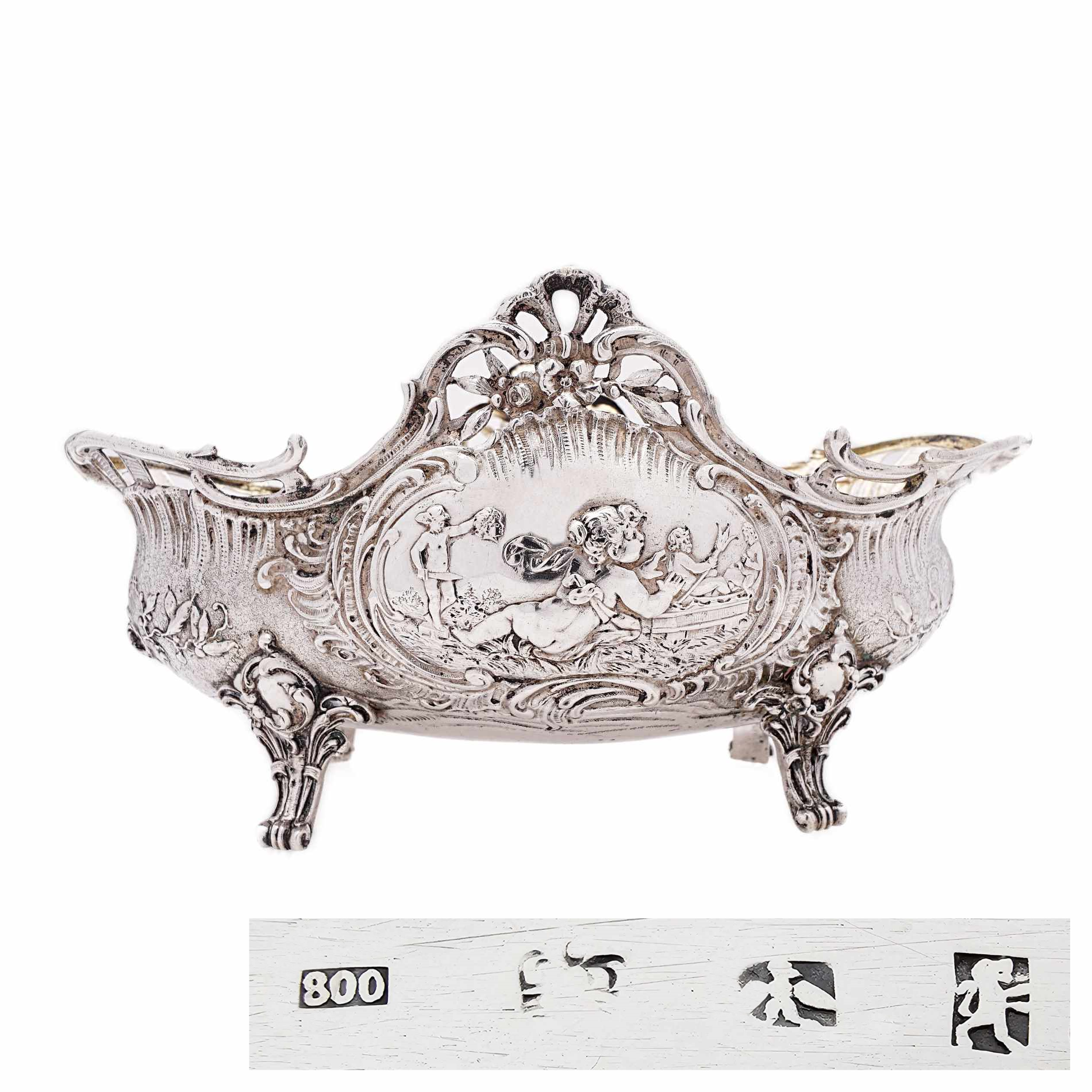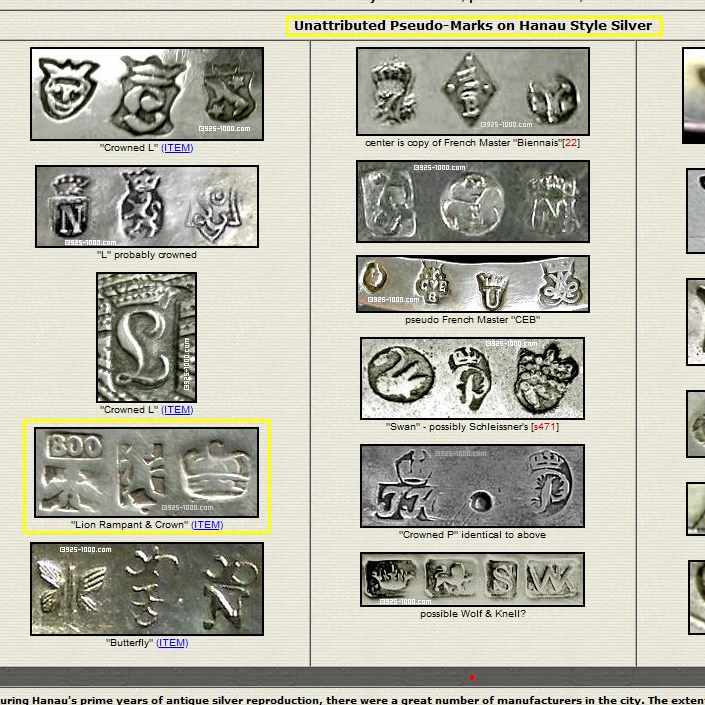Jardiniere silver bowl – rococo style Hanau
Original price was: 679,00 €.649,00 €Current price is: 649,00 €.
without declared VAT | Differential taxation according to § 25a UStG. plus shipping and handling
Wonderful playful silver bowl as a jardiniere, on four-legged volute stand, curved and partly openwork handmade. The exhibit is decorated with rocaille vines, floral elements and two different putti scenes. We can attribute the jardiniere to a Hanau silversmith, unfortunately the actual silversmith is unknown at this time.

Immediately ready for shipment
Delivery time 1 – 3 working days

Free Shipping
Within Germany from €99 order value

One month right of withdrawal
Valid for all products
1 in stock
| Designation | |
|---|---|
| Manufacturer | Unknown |
| Region | |
| Time | |
| Hallmark | – Master mark |
| Material | |
| Dimensions | L 22.0 cm x W 13.0 cm x H 11.3 cm |
| Weight | 320.3 Gram |
| State | A |
Information about our condition assessment
A+
The item has no traces of use and is therefore in pristine condition.
This valuation is unusual for antiques and describes an exception rather than the rule.
A
This item has minimal signs of use, such as very fine surface scratches or minimally rubbed gilding.
B+
This item has very few signs of use, such as fine surface scratches, a little rubbed gilding, or a small blemish which is noticeable to a minor degree.
B
This item has few signs of use, such as normal surface scratches, age appropriate rubbed gilding, or a small blemish which is not distractingly noticeable.
C+
This item has normal signs of use, such as normal or deeper surface scratches, a noticeably rubbed gilding, or a blemish which is noticeable.
C
This item has obvious signs of use, such as deeper surface scratches, a heavily rubbed gilding, or a major blemish which is noticeable.
D
This item has very obvious signs of use, such as very deep scratches, heavy wear marks and or damage.
Restored
Is it a restored item? You can find out everything you need to know about restoration here
Jardiniere is a bowl intended for flowers, which in the 19th century was usually made as a three-legged vessel made of wood or metal. Such bowls belonged to the inventory of the well bourgeois apartment. If the decoration until the turn of the century consisted of dried plants and artificial flowers, these were increasingly replaced by natural flowers since the Art Nouveau.
Also the centerpiece, the representative, monument-like towering showpiece at the center of the festive table is replaced with the reform movement around 1900 by a flat, oblong-oval bowl, which since then is also called a jardinière and is intended for an arrangement of fresh flowers. Often it is made of silver or silver-plated metal.
The city of Hanau, located in the heart of Germany, has earned a reputation over the centuries as a center for exquisite silver jewelry.
The history of Hanau silversmithing dates back to the 16th century, when the first silversmiths opened their workshops in the city. In the course of time, Hanau developed into an important center for the production of high-quality silverware. The craftsmen from Hanau were known for their precision craftsmanship and their ability to create ornate and detailed pieces.
One of the most famous silversmiths from Hanau was Philipp Rundell, who lived and worked in the 18th century. His works were prized by royal courts throughout Europe and are now coveted collector’s items.
The art of silversmithing in Hanau has evolved over the centuries and has remained alive to this day. Modern silversmiths in Hanau continue the tradition by combining contemporary designs with craftsmanship and traditional techniques.
They are not only an important part of local culture and history, but also a symbol of German craftsmanship and quality. Their works are coveted treasures that stand the test of time and continue to honor the beauty and skill of Hanau silversmithing.
